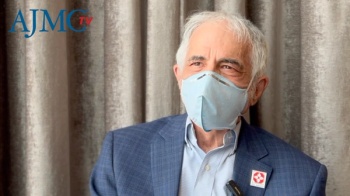
The American Journal of Managed Care
- April 2025
- Volume 31
- Issue 4
- Pages: 173-181
Insurance Payer Is Associated With Length of Stay After Traumatic Brain Injury
Key Takeaways
Among hospitalized patients with traumatic brain injury, Medicaid fee-for-service was associated with longer hospital stays than private insurance and Medicaid managed care organizations.
ABSTRACT
Objectives: Timely provision of postacute care (PAC) rehabilitation is critical for achieving functional recovery after traumatic brain injury (TBI). Medicaid coverage is a predictor of prolonged hospital length of stay (LOS) after TBI, a proxy for decreased PAC access. Among Medicaid patients with TBI, it is unknown whether coverage under a managed care organization (MCO) or fee-for-service (FFS) model predicts differences in LOS.
Study Design: Discharge data for patients with TBI from 318 California hospitals between 2017 and 2019 were obtained. We used multivariable regression models, treating mortality/hospice disposition as competing risks, to evaluate associations between insurance type and LOS, adjusting for sociodemographic factors and illness severity. Sensitivity analysis was conducted in patients with severe TBI identified by receipt of intracranial pressure monitoring or trauma craniotomy/craniectomy. Adjusted HRs (aHRs) were reported.
Methods: The California Department of Health Care Access and Information Patient Discharge Dataset was queried for patients with TBI using International Classification of Diseases, Tenth Revision, Clinical Modification codes. Exclusion criteria were younger than 18 years or older than 65 years, payer other than private insurance (PI) or Medicaid, death or hospice discharge within 5 days of hospitalization, presence of a do-not-resuscitate order, and nonemergency admission.
Results: A total of 39,834 patients were analyzed (FFS, 24.2%; MCO, 33.2%; PI, 42.6%). Competing risk regressions showed that Medicaid models were associated with longer LOS compared with PI (FFS: aHR, 0.80; 95% CI, 0.80-0.83; MCO: aHR, 0.92; 95% CI, 0.87-0.96). Compared with MCOs, FFS was associated with longer LOS in the overall cohort (aHR, 0.88; 95% CI, 0.85-0.91) and in the severe TBI subgroup (aHR, 0.90; 95% CI, 0.82-0.99).
Conclusions: Medicaid FFS is associated with increased LOS in hospitalized patients with TBI compared with Medicaid MCOs, suggesting decreased PAC access.
Am J Manag Care. 2025;31(4):173-181.
Takeaway Points
This is the first report describing disparities in hospital length of stay (LOS) between patients with traumatic brain injury (TBI) covered under distinct Medicaid models: fee-for-service (FFS) and managed care organizations (MCOs).
- In an analysis of 39,834 patients with TBI discharged from California hospitals, it was observed that Medicaid FFS was independently associated with longer hospital LOS compared with MCO coverage and private insurance, even after adjusting for important sociodemographic and clinical factors.
- The association between FFS and longer LOS suggests that Medicaid reimbursement models affect access to postacute care services for patients with TBI along their hospital discharge pathways, which warrants closer examination.
Traumatic brain injury (TBI) remains an enduring public health burden in the US, with more than 214,00 TBI-related hospitalizations in 20201 and cumulative care costs exceeding $76 billion.2 Hospital length of stay (LOS) is a commonly measured health care performance metric associated with hospital complications,3 in-hospital and postdischarge mortality, and readmissions.4,5 Mean TBI LOS has been estimated at 7 days for intensive care unit (ICU) admissions and 3 days for non-ICU admissions.6 In addition to sociodemographic (eg, age, sex, socioeconomic status [SES])7 and clinical (eg, comorbidities, injury severity) factors being predictors of TBI LOS,8,9 recent evidence has also implicated insurance type, namely Medicaid, as a TBI LOS predictor.10-12
Prolonged LOS may indicate difficulties accessing postacute care (PAC) services after trauma (eg, inpatient rehabilitation, skilled nursing facility [SNF] care), which are critical services to facilitate long-term recovery among patients with TBI.13 Compared with private insurers and Medicare, Medicaid models offer lower reimbursements for comparable inpatient services.14 Although Medicaid is the largest national payer for nursing care,15 low reimbursement rates have historically disincentivized access to SNF services.16
Effects of Medicaid payment models on TBI LOS remain unknown, constituting a key knowledge gap. Medicaid insures more than 88 million Americans17 and 16% of hospitalized patients with TBI,18 comprising a patient group who is disproportionately younger and underserved, with low SES, which are concomitant risk factors for TBI.19,20 State and local agencies have relative autonomy in designing Medicaid delivery platforms within broader federal regulatory constraints.Medicaid was historically offered through a fee-for-service (FFS) model, which reimburses health care services when rendered. Over the past 3 decades, Medicaid managed care organizations (MCOs) have proliferated21 as an alternate system, through which a third-party payer receives a fixed-sum payment per beneficiary and administers payments for services directly or through cost-sharing arrangements.22 MCOs are financially incentivized to reduce health care costs through accountable spending, quality assurance, and resource allocation.23 In 2023, more than 15.5 million California residents were Medicaid enrollees24 and 80% of them had MCO plans.25
Recent study results identified Medicaid as a predictor of prolonged TBI LOS at a California level 1 trauma center and safety-net hospital,11,12 which were externally validated in 552,949 patients with TBI from the National Trauma Data Bank.26 Because prior studies only evaluated Medicaid enrollees collectively, our study examined specifically whether Medicaid FFS and MCO payment models were associated with LOS disparities compared with private insurance (PI) after acute TBI. To account for the effect of injury severity on LOS, a sensitivity analysis was conducted in patients with severe TBI. We hypothesized that MCO beneficiaries experience shorter LOS vs FFS beneficiaries, potentially due to aligned financial incentives that facilitate timely discharge from high-cost inpatient care when clinically appropriate.
METHODS
Study Cohort and Inclusion Criteria
The California Department of Health Care Access and Information (hereafter referred to as HCAI) mandates the annual reporting of 21 standard data elements encompassing demographics, admission/discharge parameters, diagnosis and procedure codes, injury severity, and payer information for all inpatients discharged from California-licensed hospitals27 to enable the public and third-party payers to study attributes of hospital finances.28 General acute care, acute psychiatric, chemical dependency recovery, and psychiatric health facilities not operating under a federal license (ie, Veterans Health Administration, Department of Defense, US Public Health Service) are covered by this mandate, encompassing 9973 facilities.29 HCAI source data are fully deidentified and published annually as the Patient Discharge Dataset (PDD). Our study utilized data from inpatient PDD years 2017-2019, encompassing 11,502,772 discharges. Because PDDs do not contain protected health information, institutional review board review and patient informed consent were not required nor applicable to our study.
Information on patients with a primary diagnosis of TBI as defined by International Classification of Diseases, Tenth Revision, Clinical Modification (ICD-10-CM) codes S06.0-S06.9/A was extracted (eAppendix Table 1 [
Exclusion criteria were as follows: younger than 18 years or older than 65 years, a disposition of expired or hospice within 5 days of hospitalization, a source of admission not from ED, a type of admission of elective or newborn, a do-not-resuscitate order at the time of or within the first 24 hours of the patient’s admission, and nonnumeric LOS. The rationale for these exclusion criteria was to focus the study sample to adult patients younger than 65 years with acute TBI, with complete data, who did not have nonsurvivable injuries. The study flow diagram is shown in the eAppendix Figure.
Patient Characteristics and Variable Coding
Analyses were conducted in our full study cohort and in the severe TBI subgroup. Severe TBI was defined as having intracranial pressure (ICP) monitoring (“principal procedure” [proc_p] or “other procedure” [oproc1-oproc24] = ICD-10 Procedure Coding System codes 00H002Z, 00H032Z, 009600Z, 009630Z, 00H602Z, 00H632Z) or craniotomy/craniectomy for trauma (Medicare Severity Diagnosis Related Group [MS-DRG] code 955).
PDD data were characterized inclusive of age at admission, sex, ethnicity/race, primary language, SES quintiles, hospital discharge disposition, inpatient charges (rounded to the nearest thousand), and LOS. Illness severity measures included MS-DRG weight (proxy measure of resource intensity), major complication/comorbidity (MCC) per MS-DRG severity code ([sev_code] = 1),30 and 30-day all-cause readmission risk (derived from Elixhauser Comorbidity Index score).31 Preliminary analyses of geographic distribution of sites using rural-urban commuting areas (RUCAs)32 and hospital referral regions (HRRs)33 derived from zip codes indicated an urban predominance (99.3% of hospitals). Disposition categories included home (PDD codes 01, 07), home with services (06, 81, 86), inpatient rehabilitation facility (62, 90), SNF (03, 64, 83, 92), long-term acute care hospital (63, 91), other acute care (02, 05, 66, 82, 94), and other intermediate care (04, 21, 43, 61, 65, 69, 70, 84, 85, 87, 88, 89, 93, 95) (code descriptions in eAppendix Table 2).
Statistical Analysis
Sociodemographic and clinical characteristics were compared by insurance type (FFS/MCO/PI) using the Pearson χ2 test for categorical variables and analysis of variance for continuous variables. Medians and IQRs were reported unless otherwise indicated. Statistically significant variables (P < .05) on univariate analyses were entered onto multivariable regressions. Small numbers of data coded as “unknown” were present for 4 variables (sex [< 1%], normalized race/ethnicity group [< 2%], primary language [< 1%], SES quintile [< 4%]) and were entered onto multivariable regressions as stand-alone subcategories. Multivariable competing risk regression models using the cumulative incidence function (CIF) with Fine-Gray subdistribution HRs were constructed,34 with time to hospital discharge (days) as the outcome and insurance payer as the variable of interest. Disposition categories of “hospice” or “died” beyond 5 days of hospitalization were treated as competing events. SEs were adjusted for geographic region by clustering discharges at the HRR level. To account for potential confounding regional differences due to Medicaid policies, practice variation, and PAC availability, we conducted additional sensitivity analyses in our adjusted model to include region (defined as HRR) as a fixed-effects covariate for the full cohort and the severe TBI subgroup (eAppendix Table 3). Compared with the reference group, HRs greater than 1.0 signified a higher rate of hospital discharge (ie, shorter LOS) and HRs less than 1.0 signified a lower rate of discharge (ie, longer LOS). Adjusted HRs (aHRs) and 95% CIs were reported. Our severe TBI subgroup was derived using 2 variables: ICP monitoring and craniotomy/craniectomy for trauma. Therefore, multivariable regressions in the severe TBI subgroup did not further adjust for these. Statistical analyses were performed using SAS/STAT 14.1 (SAS Institute Inc).
RESULTS
Differences by Insurance Type: Overall Cohort
Sociodemographic and clinical variables compared by insurance type are shown in
Regarding disposition, FFS had the highest mortality (2.1% vs 1.8% for MCO and 1.3% for PI) and home discharges (71.9% vs 65.0% and 60.2%); Medicaid models vs PI had fewer discharges to other acute care (FFS, 2.7%; MCO, 3.4%; PI, 12.1%) and inpatient rehabilitation facilities (FFS, 8.3%; MCO, 6.1%; PI, 9.4%; P < .001).
Differences by Insurance Type: Severe TBI Subgroup
Statistical differences observed in the overall cohort, including age, sex, ethnicity/race, language, and SES quintiles, were consistent in our sensitivity analysis of 2184 patients with severe TBI (FFS, 32.1%; MCO, 32.5%; PI, 35.4%) (
Medicaid Is Associated With Longer LOS vs PI
In multivariable analyses, median (IQR) LOS was slightly longer in Medicaid models vs PI (FFS, 4 [2-11] days; MCO, 4 [2-9]; PI, 3 [1-7]; P < .0001) (Table 1). In the overall cohort, lower hospital discharge rates (longer LOS) were associated with FFS (aHR, 0.80; 95% CI, 0.78-0.83) and MCO (aHR, 0.92; 95% CI, 0.87-0.96) vs PI as the reference group (
Medicaid FFS Is Associated With Longer LOS vs MCO
Compared with MCO, FFS was associated with lower discharge rates (longer LOS) in the overall cohort (aHR, 0.88; 95% CI, 0.85-0.91) (
Findings were similar in our sensitivity analyses, with relative differences in the aHR of 0.1% for FFS and –0.2% for MCO (vs PI) for our overall study cohort and 3.8% and 2.7%, respectively, for our severe TBI subgroup (eAppendix Table 3).
DISCUSSION
In this study of all California TBI hospitalizations between 2017 and 2019, having Medicaid as a payer was independently associated with increased LOS compared with PI in both the overall TBI cohort and the severe TBI subgroup. Within Medicaid groups, FFS coverage was associated with longer LOS compared with MCO coverage. Multivariable associations between LOS and Medicaid models were statistically significant in both the overall cohort and the severe TBI subgroup, underscoring this relationship after accounting for sociodemographic and clinical factors that could influence LOS. Altogether, our findings suggest that insurance payment, including its structure and incentives, may influence hospital discharge practices independent of patient characteristics and illness severity. To our knowledge, this is the first TBI study to identify and characterize differences in LOS based on Medicaid payment model.
Medicaid Reimbursement Models Influence Access to PAC
Our finding that Medicaid FFS is associated with longer LOS compared with MCO suggests that Medicaid reimbursement mechanisms may influence access to PAC services at discharge for inpatients with TBI. Although the underlying causes of this difference are unclear and beyond the scope of our study, the distinct financial incentives by MCO plans may play a role. In a capitated payment system, financial risks incurred from health care costs are held primarily by the insurer.35 In outpatient settings, this has raised concerns that MCOs may lead to the undertreatment of patients and underutilization of health care services.36 However, our findings suggest that MCO patients may have better access to the PAC services needed for expeditious discharge compared with FFS patients. Hence, capitation might provide stronger financial incentives for transfer from higher-cost inpatient care to lower-cost PAC once a lower level of care is determined to be clinically appropriate.
Interestingly, a higher proportion of home discharges was observed in Medicaid FFS compared with MCO and PI groups in our overall cohort and in the severe TBI subgroup. In the context that patients with TBI and FFS coverage incur PAC placement challenges, certain subgroups of FFS patients may sufficiently improve over their comparatively longer LOS for home discharge, which may also be their sole discharge option given insurance barriers even if it is suboptimal for long-term recovery. In a 2022 study of patients in the top percentile of institutional TBI LOS, those alive at discharge remained hospitalized, on average, for another 56 days after documented medical stability before being placed.12 Our findings in patients with severe TBI are consistent with a 2024 US national study of 103,081 patients with severe TBI that showed higher proportions of home discharges occurred in patients with LOS of 47 days or longer compared with 20 to 46 days.26 Patient factors may further confound the likelihood of home discharge by insurance type. In our study, substantially more FFS patients primarily spoke Spanish, raising the concern that longer LOS may result from communication barriers between non–English-speaking patients and hospital providers and staff who coordinate complex discharge care. Geographic availability of PAC facilities may also contribute to higher home discharges in FFS patients. As described in our Methods section, we evaluated rurality using RUCA and HRR; 99% of HCAI PDD TBI discharges were from urban areas, where PAC facilities are concentrated. We further adjusted for geography in multivariable regressions by clustering SEs at the HRR level. Even so, urban PAC facilities may differ in policies and practices for accepting patients by insurance type, illness severity and complexity, and locale. In our cohort, sensitivity analyses comparing HRR as a clustered variable vs a fixed-effects covariate did not suggest significant confounding by referral region.
Medicaid FFS reimburses private hospitals under the All Patient Refined DRG model, which includes lump-sum payments upon admission based on diagnosis code. However, public hospitals, including many trauma centers, are reimbursed by FFS through an audited cost-based model, with separate per-diem rates for PAC facilities.37 Although some patients may qualify for outlier payments (ie, additional reimbursement), financial incentives under the FFS model may remain inadequate in expediting discharge, and hospitals may still face challenges in discharging patients due to lack of accepting PAC facilities secondary to lower per-diem rates than other payers.38 In contrast, Medicaid MCOs reimburse hospitals through many mechanisms, including capitated, pay-for-performance, and shared savings models, which provide incentives to optimize the entire episode of acute/postacute care collectively and provide stronger financial incentives to encourage timely discharges, aligning with the “right care, right place, right time” principle of managed care.
Although some studies have reported inconsistent effects of Medicaid MCOs on the accessibility and quality of health care services,39,40 Medicaid programs across all US states employ strict health care quality reporting standards,41,42 which generally report favorable patient satisfaction with managed care Medicaid compared with other insurance types.43 Numerous studies have identified barriers to health care provider access faced by Medicaid patients compared with privately insured patients, including increased wait times for specialists.44 However, among patients insured by Medicaid, improved health care resource allocation tends to occur when a state switches from Medicaid FFS to MCO.45 Our findings confirm shorter LOS among MCO vs FFS enrollees in patients hospitalized with TBI in a large, multiyear, California statewide cohort.
Implications for Future Health Policy
Our findings, conducted in hospitalized patients with TBI insured by both Medicaid FFS and MCO from a large statewide database with uniform data reporting standards, are timely in informing upcoming US health policy and health care considerations. Since 2024, all new California Medicaid enrollees are covered through a mixture of county-level public and private MCOs, without the option for FFS for several counties.46,47 Although a few states follow similar trajectories (eg, New Jersey),48 many states offer both MCO and FFS plans to potential enrollees (eg, Georgia)49 or, in some cases, exclusively FFS (eg, Alaska).50
Our findings provide favorable evidence for TBI LOS in patients insured by Medicaid MCOs, suggesting improved PAC access. These findings have important planning implications for state and local Medicaid agencies tasked with designing and implementing Medicaid plans. Further studies are required to better characterize how Medicaid reimbursement and other policy mechanisms specifically contribute to differences in accessing PAC for TBI.
Limitations
We recognize several limitations of our study. First, specific policies guiding Medicaid enrollment and distribution of benefits vary significantly between states, so our findings may not be generalizable to Medicaid programs in other states. However, we included all TBI hospitalizations within California, which is the largest Medicaid program nationwide and contains a mix of FFS and MCO enrollees. Second, although we adjusted for a range of illness severity measures, there still may be unobserved differences between patients with different payer types. However, differences between FFS and MCO enrollees would be anticipated to be smaller than compared with privately insured individuals, and our findings were consistent when we focused on the subgroup of TBI patients with the greatest illness severities. Third, although our regressions adjusted for small numbers of unknown and/or missing data in the HCAI PDD, these small unknowns may have caused unmeasured residual bias during interpretation.
During our study period, enrollment in FFS and MCO programs was nonstandardized across counties in California and FFS enrollment was restricted due to evolving state policies.46,47 The majority of patients were automatically enrolled into MCO plans, but limited exceptions were made for patients to remain enrolled in FFS plans. These restrictions may introduce unmeasured confounders of health care service access between insurance types, which could not be assessed using HCAI PDD data and require further study. Notably, LOS differences between Medicaid payment models and PI persisted in our multivariable analyses after adjusting for socioeconomic and demographic factors. We did not have information on MCO contracts with hospitals and could not differentiate how various reimbursement models (ie, shared savings or pay for performance) may have affected LOS and discharge practices.
CONCLUSIONS
Medicaid FFS was independently associated with longer hospital LOS compared with PI and Medicaid MCO in a large retrospective cohort of hospitalized patients with TBI across California-licensed hospitals. Investigation of the reasons for these differences is needed to inform policy to guide patients to the appropriate PAC settings to better optimize recovery and function after TBI.
Acknowledgments
John K. Yue, MD, and Nishanth Krishnan, BS, contributed equally to this work and are listed as co–first authors; Anil N. Makam, MD, MAS, and Anthony M. DiGiorgio, DO, MHA, are listed as co–senior authors.
Author Affiliations: Department of Neurological Surgery (JKY, NK, GTM, AMD), Weill Institute for Neurosciences (JKY, NK, GTM), Center for Clinical Informatics and Improvement Research in the Division of Clinical Informatics and Digital Transformation (CT), Department of Emergency Medicine (RYH), Philip R. Lee Institute for Health Policy Studies (RYH, WJB, ANM, AMD), Department of Epidemiology and Biostatistics (WJB), Division of Hospital Medicine in the Department of Medicine (WJB, ANM), University of California, San Francisco, San Francisco, CA; Brain and Spinal Injury Center, Zuckerberg San Francisco General Hospital and Trauma Center (JKY, NK, GTM, AMD), San Francisco, CA.
Source of Funding: A grant from the Mercatus Center at George Mason University (Award #A139895), awarded to the institution (University of California, San Francisco [UCSF]), was used to fund formal statistical analysis of the current work under the direction of the UCSF Center for Clinical Informatics and Improvement Research and support travel for presentations at scientific conferences. The funders had no role in the design and conduct of the study, analysis and interpretation of the data, or preparation of the manuscript. The California Department of Health Care Access and Information Patient Discharge Dataset data files used in this study are only approved for use by the researchers who requested the data and cannot be shared.
Author Disclosures: The authors report no relationship or financial interest with any entity that would pose a conflict of interest with the subject matter of this article.
Authorship Information: Concept and design (JKY, NK, CT, RYH, GTM, WJB, ANM, AMD); acquisition of data (JKY, NK, CT, ANM, AMD); analysis and interpretation of data (JKY, NK, CT, RYH, GTM, WJB, ANM, AMD); drafting of the manuscript (JKY, NK, AMD); critical revision of the manuscript for important intellectual content (JKY, NK, CT, RYH, GTM, WJB, ANM, AMD); statistical analysis (JKY, NK, CT, WJB, ANM, AMD); provision of patients or study materials (CT, AMD); obtaining funding (AMD); administrative, technical, or logistic support (JKY, NK, WJB, AMD); and supervision (JKY, NK, GTM, ANM, AMD).
Address Correspondence to: John K. Yue, MD, Department of Neurological Surgery, University of California, San Francisco, 505 Parnassus Ave, M773, San Francisco, CA 94143. Email: john.yue@ucsf.edu.
REFERENCES
1. Traumatic brain injury & concussion: TBI data. CDC. October 29, 2024. Accessed January 19, 2025.
2. Traumatic brain injury & concussion: about moderate and severe TBI. CDC. January 22, 2024. Accessed April 24, 2024.
3. Allman RM, Goode PS, Burst N, Bartolucci AA, Thomas DR. Pressure ulcers, hospital complications, and disease severity: impact on hospital costs and length of stay. Adv Wound Care. 1999;12(1):22-30.
4. Han TS, Murray P, Robin J, Wilkinson P, Fluck D, Fry CH. Evaluation of the association of length of stay in hospital and outcomes. Int J Qual Health Care. 2022;34(2):mzab160. doi:10.1093/intqhc/mzab160
5. Comette P, D’Hoore W, Malhomme B, Van Pee D, Meert P, Swine C. Differential risk factors for early and later hospital readmission of older patients. Aging Clin Exp Res. 2005;17(4):322-328. doi:10.1007/BF03324617
6. Levant S, Chari K, DeFrances C. National hospital care survey demonstration projects: traumatic brain injury. Natl Health Stat Report. 2016;(97):1-16.
7. Haider AH, Efron DT, Haut ER, Chang DC, Paidas CN, Cornwell EE III. Mortality in adolescent girls vs boys following traumatic shock: an analysis of the National Pediatric Trauma Registry. Arch Surg. 2007;142(9):875-880; discussion 879-880. doi:10.1001/archsurg.142.9.875
8. Moore L, Stelfox HT, Turgeon AF, et al. Hospital length of stay after admission for traumatic injury in Canada: a multicenter cohort study. Ann Surg. 2014;260(1):179-187. doi:10.1097/SLA.0000000000000624
9. High WM Jr, Hall KM, Rosenthal M, et al. Factors affecting hospital length of stay and charges following traumatic brain injury. J Head Trauma Rehabil. 1996;11(5):85-96.
10. Sorensen M, Sercy E, Salottolo K, et al. The effect of discharge destination and primary insurance provider on hospital discharge delays among patients with traumatic brain injury: a multicenter study of 1,543 patients. Patient Saf Surg. 2020;14:2. doi:10.1186/s13037-019-0227-z
11. Yue JK, Krishnan N, Chyall L, et al. Socioeconomic and clinical factors associated with prolonged hospital length of stay after traumatic brain injury. Injury. 2023;54(9):110815. doi:10.1016/j.injury.2023.05.046
12. Yue JK, Krishnan N, Chyall L, et al. Predictors of extreme hospital length of stay after traumatic brain injury. World Neurosurg. 2022;167:e998-e1005. doi:10.1016/j.wneu.2022.08.122
13. O’Keefe GE, Jurkovich GJ, Maier RV. Defining excess resource utilization and identifying associated factors for trauma victims. J Trauma. 1999;46(3):473-478. doi:10.1097/00005373-199903000-00023
14. Lopez E, Neuman T, Jacobson G, Levitt L. How much more than Medicare do private insurers pay? a review of the literature. KFF. April 15, 2020. Accessed January 22, 2024.
15. Medicaid’s role in nursing home care. KFF. June 20, 2017. Accessed January 22, 2024.
16. Hackmann MB. Incentivizing better quality of care: the role of Medicaid and competition in the nursing home industry. Am Econ Rev. 2019;109(5):1684-1716. doi:10.1257/aer.20151057
17. January 2023 Medicaid & CHIP enrollment data highlights. Medicaid.gov. Updated April 28, 2023. Accessed May 25, 2023.
18. Reid LD, Fingar KR. Inpatient stays and emergency department visits involving traumatic brain injury, 2017. Healthcare Cost and Utilization Project statistical brief 255. Agency for Healthcare Research and Quality. March 2020. Accessed May 25, 2023.
19. Matei VP, Rosca AE, Pavel AN, et al. Risk factors and consequences of traumatic brain injury in a Swiss male population cohort. BMJ Open. 2022;12(7):e055986. doi:10.1136/bmjopen-2021-055986
20. Tamás V, Kocsor F, Gyuris P, Kovács N, Czeiter E, Büki A. The young male syndrome—an analysis of sex, age, risk taking and mortality in patients with severe traumatic brain injuries. Front Neurol. 2019;10:366. doi:10.3389/fneur.2019.00366
21. Rowland D, Hanson K. Medicaid: moving to managed care. Health Aff (Millwood). 1996;15(3):150-152. doi:10.1377/hlthaff.15.3.150
22. Kongstvedt PR. Essentials of Managed Health Care. 4th ed. Jones & Bartlett Learning; 2003.
23. Caswell KJ, Long SK. The expanding role of managed care in the Medicaid program: implications for health care access, use, and expenditures for nonelderly adults. Inquiry. 2015;52:0046958015575524. doi:10.1177/0046958015575524
24. Medi-Cal monthly eligible fast facts. California Department of Health Care Services. October 2023. Accessed April 23, 2024.
25. Total Medicaid MCO enrollment. KFF. Accessed April 24, 2024.
26. Yue JK, Ramesh R, Krishnan N, et al. Medicaid insurance is a predictor of prolonged hospital length of stay after traumatic brain injury: a stratified National Trauma Data Bank cohort analysis of 552 949 patients. Neurosurgery. 2024;95(1):186-197. doi:10.1227/neu.0000000000002855
27. Inpatient discharge reporting. California Department of Health Care Access and Information. Accessed May 4, 2023.
28. California patient data reporting manual. California Department of Health Care Access and Information. February 2023. Accessed January 14, 2024.
29. Facility finder. California Department of Health Care Access and Information. Accessed May 4, 2023.
30. Office of Statewide Health Planning and Development. Patient Discharge Data (PDD) Data Dictionary. California Department of Health Care Access and Information. Updated July 2021. Accessed May 4, 2023.
31. Moore BJ, White S, Washington R, Coenen N, Elixhauser A. Identifying increased risk of readmission and in-hospital mortality using hospital administrative data: the AHRQ Elixhauser Comorbidity Index. Med Care. 2017;55(7):698-705. doi:10.1097/MLR.0000000000000735
32. RUCA data. WWAMI Rural Health Research Center. Accessed May 4, 2023.
33. Supplemental data: crosswalks. Dartmouth Atlas Data. Accessed May 4, 2023. https://data.dartmouthatlas.org/supplemental/#crosswalks
34. Austin PC, Fine JP. Practical recommendations for reporting Fine-Gray model analyses for competing risk data. Stat Med. 2017;36(27):4391-4400. doi:10.1002/sim.7501
35. Managed care’s effect on outcomes. Medicaid and CHIP Payment and Access Commission. September 12, 2023. Accessed January 14, 2024.
36. Duggan M, Hayford T. Has the shift to managed care reduced Medicaid expenditures? evidence from state and local-level mandates. J Policy Anal Manage. 2013;32(3):505-535. doi:10.1002/pam.21693
37. DHCS DRG Section. Medi-Cal Diagnosis Related Groups Payment Method Frequently Asked Questions for State Fiscal Year 2022-23. California Department of Health Care Services; July 2022.
38. Howe R. RE: California state plan amendment transmittal number 21-0021. CMS Financial Management Group. September 7, 2021. Accessed April 12, 2024.
39. Wise PH, Huffman LC, Brat G. A Critical Analysis of Care Coordination Strategies for Children With Special Health Care Needs. Agency for Healthcare Research and Quality; 2007.
40. Franco Montoya D, Chehal PK, Adams EK. Medicaid managed care’s effects on costs, access, and quality: an update. Annu Rev Public Health. 2020;41:537-549. doi:10.1146/annurev-publhealth-040119-094345
41. Quality requirements under Medicaid managed care. Medicaid and CHIP Payment and Access Commission. June 4, 2021. Accessed April 16, 2024.
42. Quality measures & reporting. California Department of Health Care Services. Accessed April 15, 2024.
43. Sisk JE, Gorman SA, Reisinger AL, Glied SA, DuMouchel WH, Hynes MM. Evaluation of Medicaid managed care. satisfaction, access, and use. JAMA. 1996;276(1):50-55. doi:10.1001/jama.1996.03540010052030
44. Murrin S. State Standards for Access to Care in Medicaid Managed Care. HHS Office of Inspector General; September 2014. Accessed April 12, 2024.
45. Ramachandran S, Banahan B III, Hardwick SP, Clark JP. Impact of the shift to Medicaid managed care on resource utilization and costs for beneficiaries in Mississippi Medicaid. Value Health. 2015;18(3):A82-A83. doi:10.1016/j.jval.2015.03.482
46. News: MCPs & stakeholders | Medi-Cal Managed Care Plan transition. California Department of Health Care Services. Accessed April 12, 2024.
47. Tatar M, Paradise J, Garfield R. Medi-Cal managed care: an overview and key issues. KFF. March 2, 2016. Accessed April 12, 2024.
48. NJ Medicaid & managed care. New Jersey Department of Human Services Division of Medical Assistance and Health Services. Accessed April 12, 2024.
49. Types of Medicaid plans. Georgia Medicaid. Accessed April 12, 2024.
50. Zhu JM, Polsky D, Johnstone C, McConnell KJ. Variation in network adequacy standards in Medicaid managed care. Am J Manag Care. 2022;28(6):288-292. doi:10.37765/ajmc.2022.89156
Articles in this issue
Newsletter
Stay ahead of policy, cost, and value—subscribe to AJMC for expert insights at the intersection of clinical care and health economics.


















































